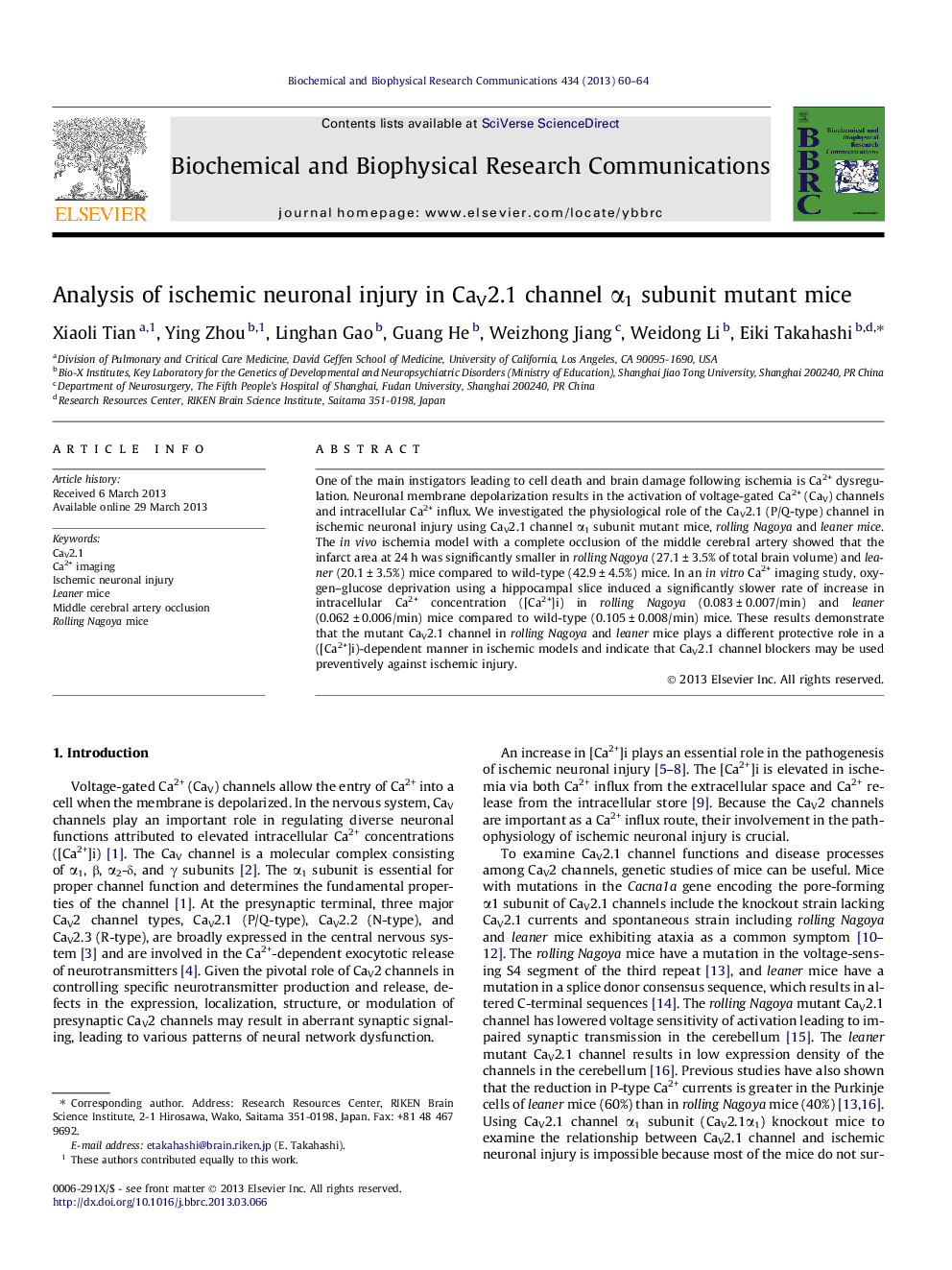| کد مقاله | کد نشریه | سال انتشار | مقاله انگلیسی | نسخه تمام متن |
|---|---|---|---|---|
| 1928852 | 1050428 | 2013 | 5 صفحه PDF | دانلود رایگان |

• We studied the physiological role of CaV2.1α1 in ischemic neuronal injury using mutants.
• Rolling Nagoya and leaner mouse brains showed similar CaV2.1α1 expression patterns.
• MCAO model showed more severe ischemic area in rolling Nagoya than in leaner mice.
• Higher [Ca2+]i was induced in rolling Nagoya than in leaner mice.
• When examining ischemic mechanisms, comparison of allelic variants was useful.
One of the main instigators leading to cell death and brain damage following ischemia is Ca2+ dysregulation. Neuronal membrane depolarization results in the activation of voltage-gated Ca2+ (CaV) channels and intracellular Ca2+ influx. We investigated the physiological role of the CaV2.1 (P/Q-type) channel in ischemic neuronal injury using CaV2.1 channel α1 subunit mutant mice, rolling Nagoya and leaner mice. The in vivo ischemia model with a complete occlusion of the middle cerebral artery showed that the infarct area at 24 h was significantly smaller in rolling Nagoya (27.1 ± 3.5% of total brain volume) and leaner (20.1 ± 3.5%) mice compared to wild-type (42.9 ± 4.5%) mice. In an in vitro Ca2+ imaging study, oxygen–glucose deprivation using a hippocampal slice induced a significantly slower rate of increase in intracellular Ca2+ concentration ([Ca2+]i) in rolling Nagoya (0.083 ± 0.007/min) and leaner (0.062 ± 0.006/min) mice compared to wild-type (0.105 ± 0.008/min) mice. These results demonstrate that the mutant CaV2.1 channel in rolling Nagoya and leaner mice plays a different protective role in a ([Ca2+]i)-dependent manner in ischemic models and indicate that CaV2.1 channel blockers may be used preventively against ischemic injury.
Journal: Biochemical and Biophysical Research Communications - Volume 434, Issue 1, 26 April 2013, Pages 60–64